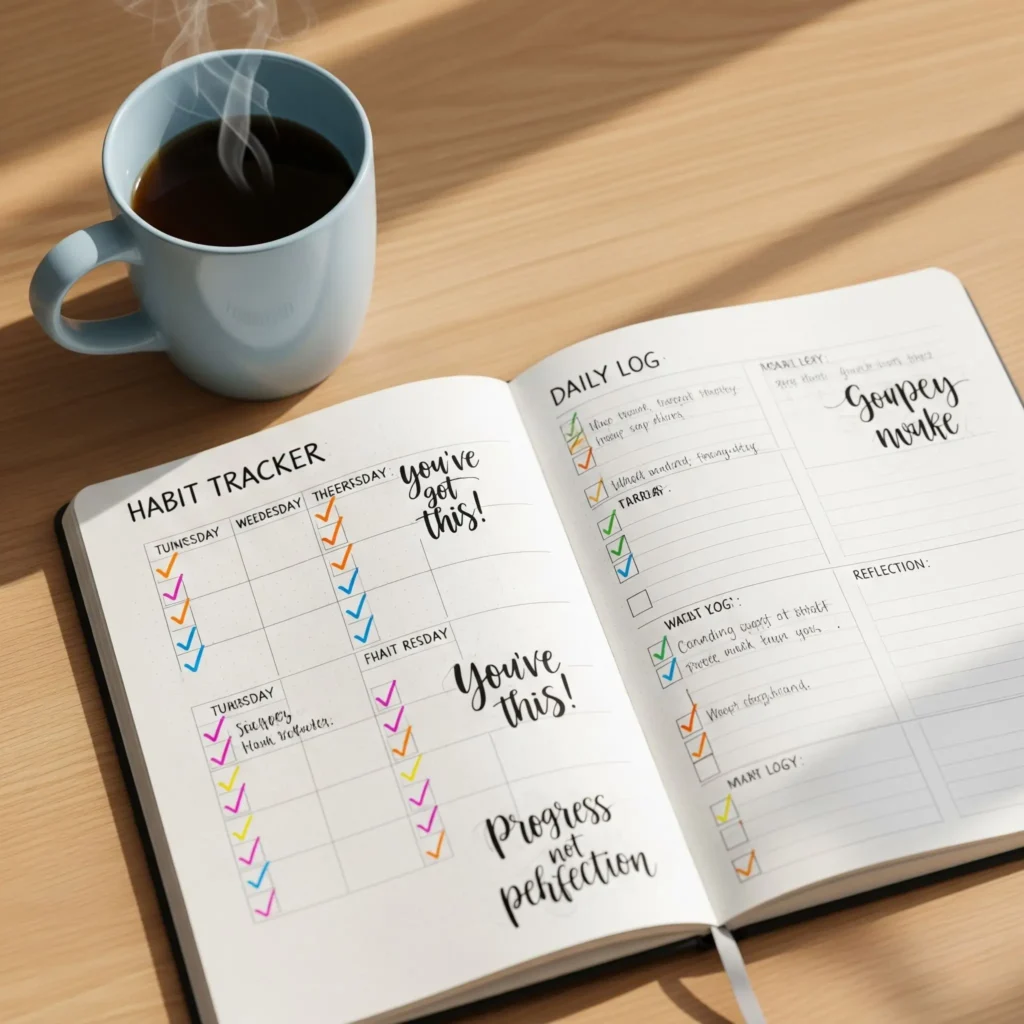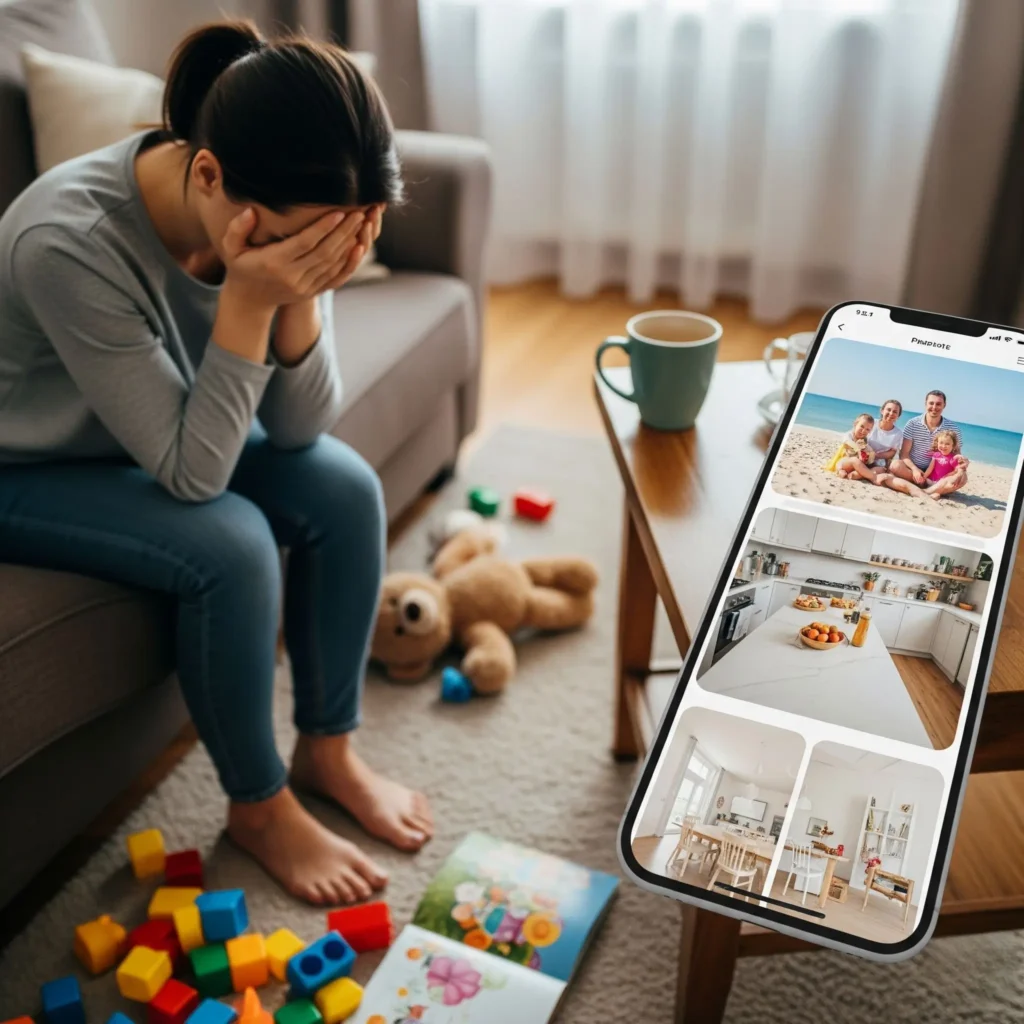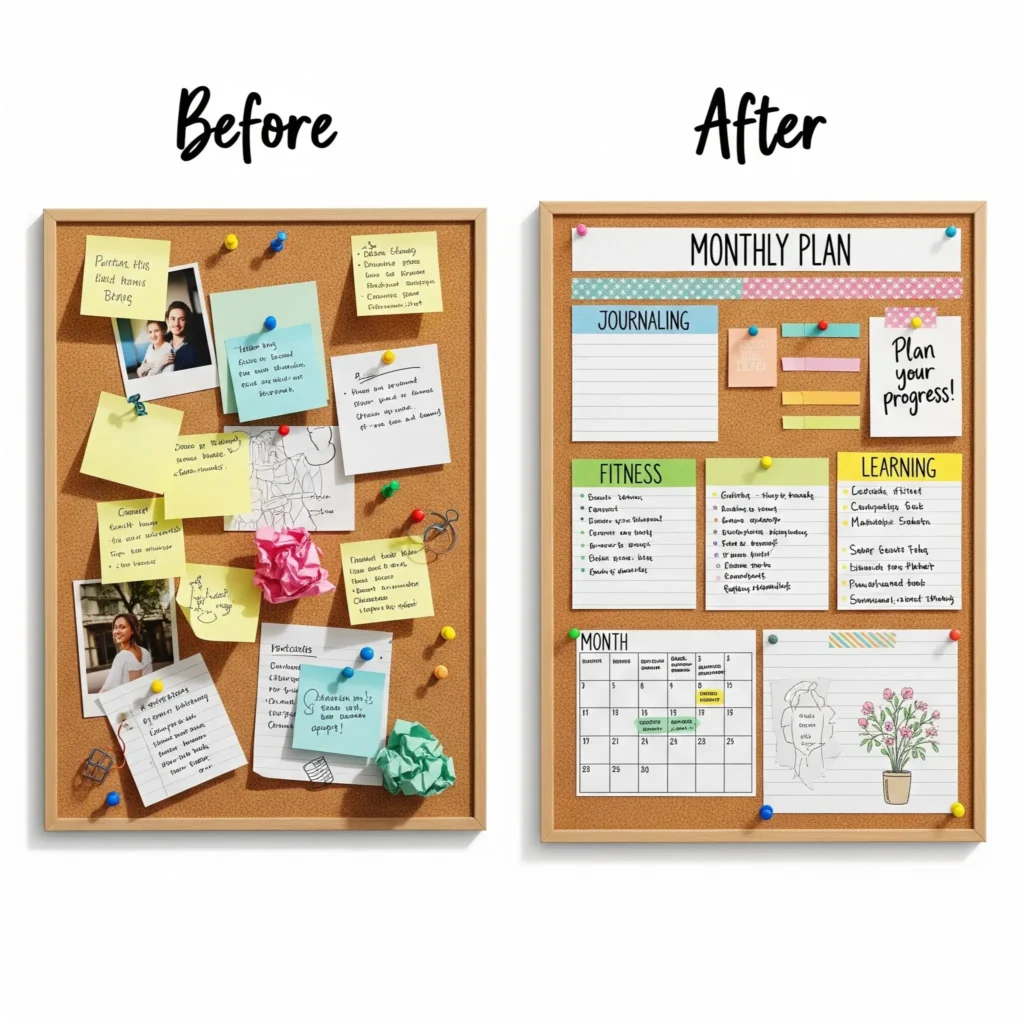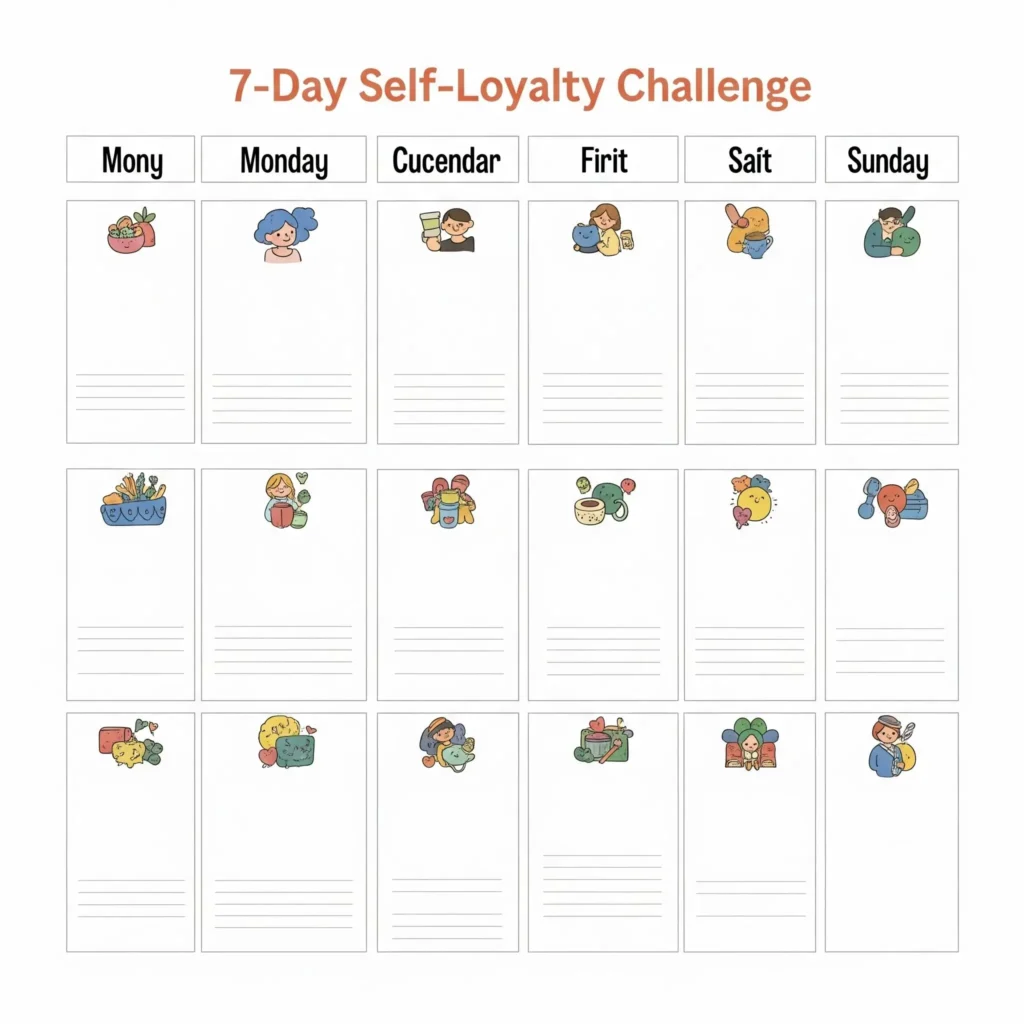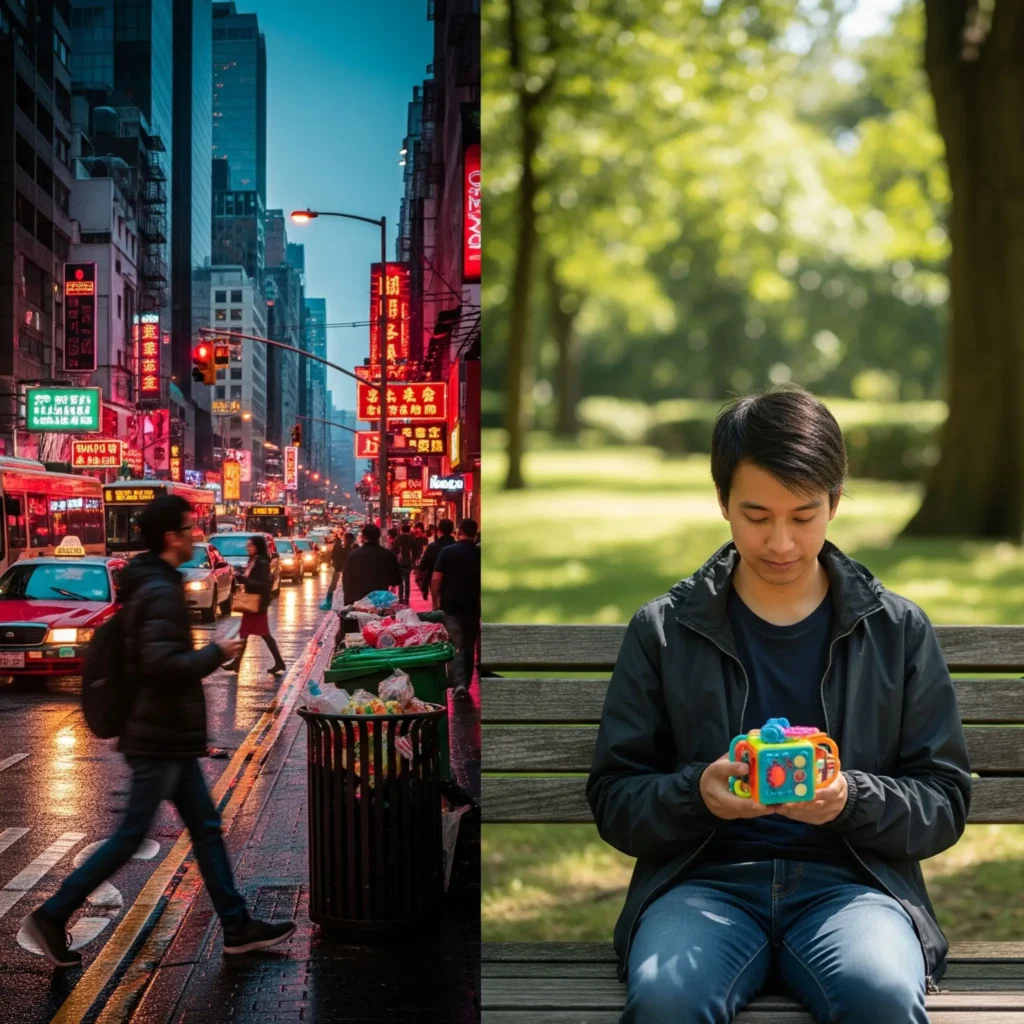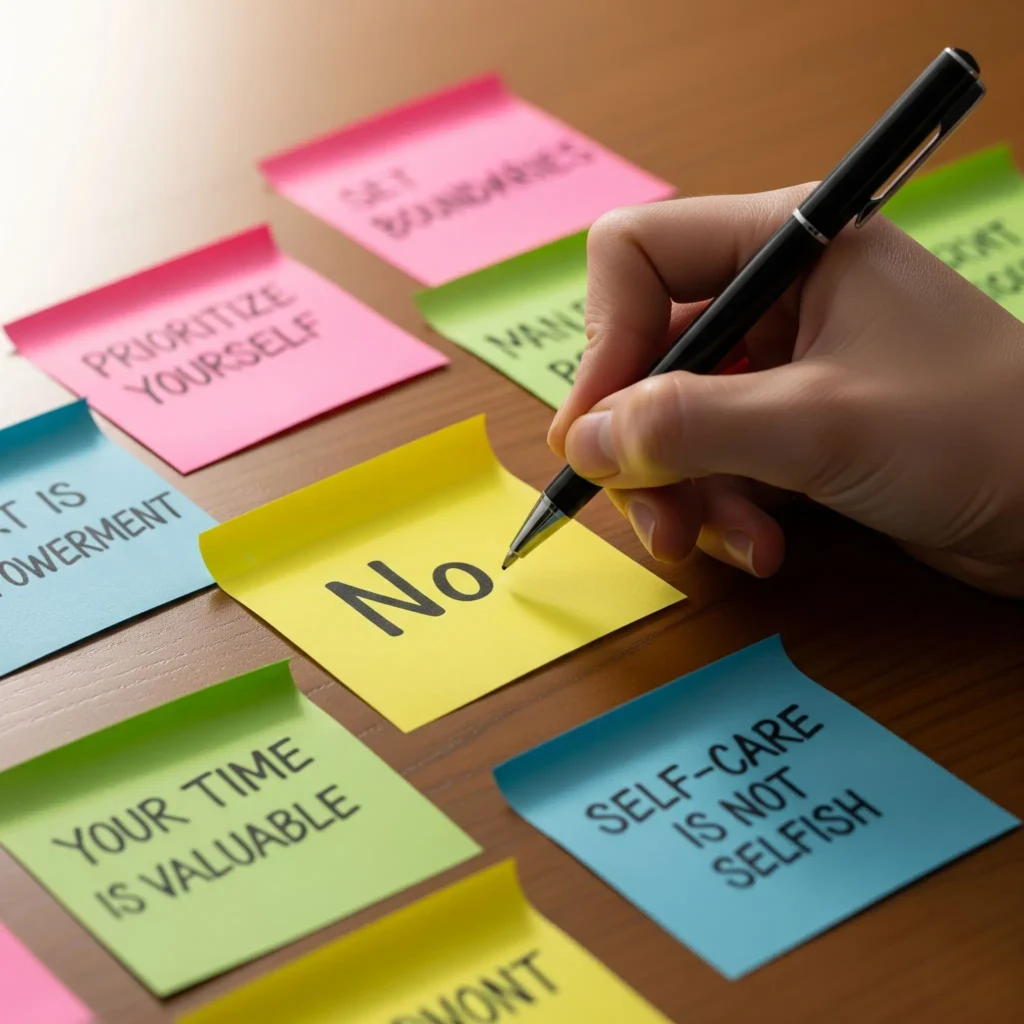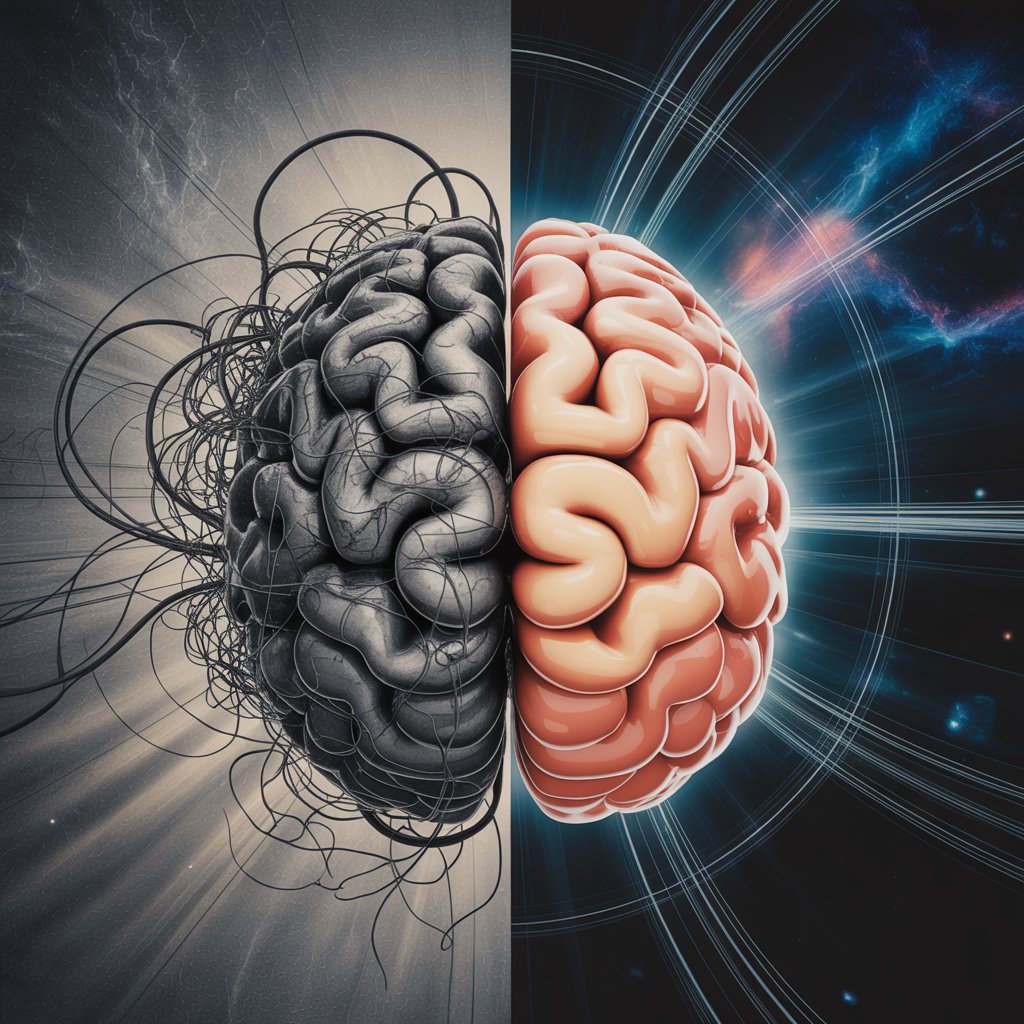Index
Introduction
- The modern struggle for inner peace
- Why the philosophy of “No Need” matters today
- My personal journey towards “No Need”
Chapter 1: The Philosophy of No Need
- What does “No Need” really mean?
- Emotional autonomy and inner freedom
- Parallels in ancient wisdom:
- Stoicism: Detachment and self-mastery
- Zen Buddhism: Non-attachment and emptiness
- Sufism: Renunciation and trust in the Divine
- How these philosophies shape the principle of “No Need”
Chapter 2: Why the Modern World Needs It More Than Ever
- Overstimulation and information overload
- The pressure for immediate reaction
- “No Need” as an antidote to anxiety and burnout
- Practical illustrations:
- Social media comparison
- Perfectionism
- External validation
- Polarized debates
Chapter 3: The No Need Toolbox
- How to apply “No Need” in daily life
- Categories of affirmations:
- Relationships
- Work and career
- Inner dialogue and self-esteem
- Consumption and materialism
- Reflection questions for self-awareness
Chapter 4: Stories and Transformations
- Personal stories of applying “No Need”
- Fictionalized testimonials based on real cases:
- Sarah: Letting go of control
- Mark: Releasing the need to be right
- Lea: Freedom from fear of judgment
Chapter 5: Training the No Need Habit
- Morning reminders and affirmations
- Journaling exercises for daily integration
- Breath and pause techniques
- Developing self-awareness to catch emotional spirals
- Mindfulness and meditation practices
Chapter 6: Living No Need Without Indifference
- Healthy detachment vs. emotional coldness
- When “No Need” does not apply: action and responsibility
- Setting healthy boundaries with compassion
- Impact on relationships, work, and health
Conclusion: Your Invitation to Inner Sovereignty
- Key takeaways and summary
- “No Need” as a daily choice
- Continuing the journey
Introduction
In the relentless whirlwind of modern life, where every moment seems dictated by a new demand, a pressing notification, or a silent expectation, many of us find ourselves trapped in an exhausting quest: the pursuit of inner peace and emotional freedom. We chase after happiness, validation, and success, often without realizing that this frantic race precisely distances us from what we seek. We are conditioned to believe that to be complete, we must accumulate, prove, react, and conform. But what if true freedom lay in the art of shedding these imperatives? What if the key to serenity could be found in a simple, yet profound, realization: the power of no need?
This book is an invitation to explore this revolutionary concept, which I call “The Power of No Need.” Far from being a philosophy of indifference or passivity, “The Power of No Need” is a proactive approach to life that allows you to regain control of your energy, your emotions, and your time. It is the art of discerning what is essential from what is superfluous, of freeing yourself from the chains of external expectations and internal pressures, and of cultivating an unshakeable inner sovereignty.
Why is this book relevant to you, the 21st-century reader? Because never before has humanity been so connected, and paradoxically, so disconnected from itself. Social media pushes us into constant comparison, news cycles overwhelm us with anxiety, and the culture of productivity exhausts us. In this landscape, “The Power of No Need” is not just a philosophy; it is a lifeline. It is a method for navigating chaos without succumbing to it, for finding calm amidst the storm, and for living an authentic life, aligned with your deepest values.
My own journey to “The Power of No Need” has not been linear. Like many, I was long a prisoner of the need to please, to succeed at all costs, and to conform to expectations. I experienced exhaustion, frustration, and the feeling of constantly being out of sync with myself. It was through my own experiences, my readings, and my reflections that I began to glimpse the liberating power of this principle. I learned, sometimes the hard way, that true strength does not lie in the ability to do everything, but in the wisdom of knowing what you don’t need to do. This book is the fruit of that exploration, a sincere sharing of what I have discovered and how it has transformed my life. I am convinced that it can transform yours too.
Prepare to question your certainties, to deconstruct the habits that hold you back, and to embrace a new way of being. The journey begins now. Welcome to the power of no need.
Chapter 1: The Philosophy of No Need
The concept of “The Power of No Need” is much more than a simple phrase; it is a philosophy of life that, once integrated, can radically transform your relationship with the world and with yourself. Literally, it means “no need for” or “there is no reason to.” In everyday language, it is used to say “it is not necessary” or “don’t worry about it.” But its profound meaning goes far beyond this superficial translation. It is an invitation to free yourself from self-imposed constraints and external pressures that dictate our reactions, emotions, and actions.
Imagine for a moment that you don’t need to react to every provocation, to prove your worth in every interaction, to worry about every uncertainty, or to conform to every expectation. This is precisely where the power of “No Need” lies. This principle acts as a protective shield for your inner energy and peace of mind. By consciously choosing not to engage in useless battles, not to be carried away by destructive emotions, and not to submit to external judgments, you preserve a precious resource: your inner tranquility. It is a form of emotional autonomy, where you decide what deserves your attention and energy, and what does not.
While the specific phrase might vary across cultures, the concept it embodies resonates through ages and cultures, finding striking parallels in various philosophies and spiritual traditions. This demonstrates the timeless relevance of this wisdom.
Stoicism: Detachment and Self-Mastery
In ancient Greece, Stoic philosophers like Seneca, Epictetus, and Marcus Aurelius taught the importance of detachment. For them, the key to serenity (ataraxia) lies in distinguishing between what is within our control and what is not. We cannot control external events, the opinions of others, illness, or death. But we can control our judgments, our actions, and our reactions to these elements. Stoicism invites us to emotionally detach from what is beyond our control, not out of indifference, but to avoid unnecessary suffering. It is a form of “no need to worry about what is not up to me,” a serene acceptance of the order of the world.
By practicing this self-mastery, the Stoic cultivates an unshakeable inner freedom, becoming impervious to the whims of fortune and emotional turbulence.
Zen (Buddhism): Non-Attachment and Emptiness
Buddhism, and particularly the Zen tradition, highlights the concept of non-attachment (upekkha in Pali). It is not about rejecting the world or owning nothing, but about not clinging to things, people, ideas, or experiences. The Buddha taught that suffering arises from attachment and desire. By freeing oneself from these attachments, one reaches a state of emptiness (sunyata), not a nihilistic void, but an openness to the present experience, without the filters of expectations or fears. Non-attachment in Zen is an active practice of
letting go, a recognition that everything is impermanent. It is the “no need to cling” to pleasures, pains, successes, or failures, thus allowing for fluidity and adaptability in life. Meditation (zazen) is an essential tool for observing thoughts and emotions without identifying with them, thereby strengthening the ability to not attach.
Sufism: Renunciation (Zuhd) and Reliance on God (Tawakkul)
In the mystical tradition of Islam, Sufism, similar concepts emerge through renunciation (zuhd) and complete reliance on God (tawakkul). Zuhd is not forced poverty, but a detachment of the heart from material possessions and worldly desires. It is about not letting earthly possessions or ambitions obscure one’s relationship with the Divine.
Tawakkul, on the other hand, is absolute trust in divine providence, which implies letting go of anxieties related to the future or the outcomes of actions. It is the “no need to control everything” or “no need to worry about tomorrow,” because faith in God is sufficient. These Sufi practices aim to free the individual from the chains of the ego and earthly attachments, leading to deep inner peace and spiritual union. The spirit of “No Need” is intrinsically linked to these notions of renunciation and trust, where one sheds the superfluous to embrace the essential.
These historical and philosophical parallels underscore that “The Power of No Need” is not a new idea, but a universal wisdom, rediscovered and reinterpreted throughout the ages. It is an invitation to shed the burden of the unnecessary to embrace the lightness of being.
My own journey with “The Power of No Need” began with a painful realization. For years, I lived with the constant feeling of having to prove my worth, whether in my studies, my career, or my relationships. Every failure was a catastrophe, every criticism a personal attack, every success an ephemeral validation. I was a slave to the approval of others and my own unrealistic expectations. Emotional and mental exhaustion was my daily companion. One day, after yet another professional disappointment, I found myself facing a wall. It was then that I began to ask myself fundamental questions: “Why do I feel the need for all this?” “What drives me to this frantic race?”
It was by exploring these questions, by reading about Stoicism, Buddhism, and by reconnecting with my own cultural and spiritual roots, that I began to understand the liberating power of “No Need.” I realized that I didn’t need to justify myself to everyone, that I didn’t need to conform to ideals that weren’t my own, and that I didn’t need to carry the weight of others’ expectations. It was a slow and gradual process, made up of small victories and a few relapses. But each time I consciously applied the principle of “No Need”
‒ by choosing not to react to an unpleasant remark, by accepting not to have control over a situation, by letting go of the need for perfection ‒ I felt a profound liberation. It was as if an immense weight had been lifted from my shoulders. This personal experience convinced
me of the relevance and necessity of sharing this wisdom. “The Power of No Need” is not an
abstract theory; it is a lived practice, a path to freedom and peace that I invite you to discover.
Chapter 2: Why the Modern World Needs It More Than Ever
If the concept of “No Need” is a timeless wisdom, its urgency and relevance have never been more pressing than today. The modern world, with its dazzling technological advancements and omnipresent connectivity, has paradoxically plunged us into an unprecedented state of sensory and emotional overload. We are constantly solicited, bombarded with information, and subjected to an invisible but omnipresent pressure.
Overstimulation and Information Overload
Open your phone, turn on your computer, or even walk down the street: you are immediately immersed in an uninterrupted flow of data. Social media, designed to capture our attention, exposes us to constant comparison with often idealized lives. News, whether local or global, reaches us in real-time, often with an emphasis on drama and crisis, fueling a sense of collective anxiety. Notifications, those small audible or visual alerts, interrupt our concentration at any moment, pulling us away from a task to remind us of a new demand, a new message, new information to consume. We have become passive receptacles of a deluge of information, without having the time to process it, digest it, or even question it.
The Pressure for Immediate Reaction
In this hyper-connected world, waiting has become unbearable. We are conditioned to react instantly. An email not answered within the hour, a message seen but without an immediate reply, an opinion not expressed on a hot topic ‒ all of this can generate a feeling of guilt or urgency. This pressure for immediate reaction deprives us of the necessary space for reflection, for stepping back, and for wisdom. We often act on impulse, under the sway of emotion or the Fear Of Missing Out (FOMO), rather than by conscious and deliberate choice. We feel obliged to comment on every post, to give our opinion on every debate, to engage in every cause, even if it doesn’t deeply resonate with us.
“No Need” as a Counter-Force
It is precisely in this context that “The Power of No Need” emerges as an essential counter- force. It acts as a powerful antidote to the generalized anxiety, burnout, and emotional fatigue that characterize our era. By adopting this philosophy, you give yourself permission to:
• No need to know everything: You are not obliged to consume every piece of information, to follow every news story, or to keep up with every detail. You can choose
to inform yourself selectively, protecting your mind from overload.
• No need to react immediately: You have the right to take your time, to breathe, to reflect before responding. The pause is an act of power, not weakness.
• No need to please everyone: Your worth does not depend on external approval. You can free yourself from the constant need for validation and the fear of judgment.
• No need to compare yourself: Social media often presents a sanitized version of reality. You don’t need to measure your life against the apparent successes of others.
• No need to control everything: Uncertainty is part of life. Letting go of the need to control every aspect of your existence is an immense source of relief.
Examples of Draining Situations in Modern Life
To illustrate the impact of this philosophy, let’s consider some common situations that drain our energy and peace of mind:
• Social comparison on networks: You scroll through your feed and see friends on exotic vacations, colleagues getting promotions, or influencers displaying a perfect life. Instantly, a feeling of inadequacy, envy, or frustration can arise. “The Power of No Need” allows you to recognize these feelings without attaching to them, to remind yourself that you don’t need this comparison to define your own happiness or success.
• Unrealistic expectations of perfection: Whether in your work, your relationships, or even your physical appearance, modern society pushes us towards unattainable ideals. The need to be perfect in all areas is a constant source of stress and disappointment. “No Need” invites you to embrace your imperfections, to accept that “good enough” is often more than enough, and to free yourself from the tyranny of perfectionism.
• The constant need for external validation: We often seek the approval of others to feel worthy. Whether it’s a “like” on a photo, a compliment on our work, or recognition of our efforts, this need for validation makes us vulnerable to external opinions. “The Power of No Need” helps you cultivate internal self-esteem, to validate yourself, and no longer depend on the gaze of others to feel complete.
• Endless and polarized debates: Online platforms are often the scene of heated discussions and deep disagreements. The need to “win” an argument, to convince the other, or to prove your point can be exhausting. “No Need” allows you to choose your battles, to recognize when a discussion is sterile, and to withdraw with dignity, without feeling the need to always have the last word.
By recognizing these traps and consciously applying “The Power of No Need,” you begin to dismantle the mechanisms that bind you to anxiety and exhaustion. You no longer react by default, but by choice. You no longer endure life; you direct it. It is a silent, but profound, revolution that begins within you.
Chapter 3: The No Need Toolbox
Now that we have explored the philosophy and relevance of “The Power of No Need” in the modern world, it is time to move into action. This chapter is your practical guide, your personal “toolbox,” filled with concrete affirmations you can use daily to free yourself from unnecessary pressures and cultivate your inner peace. Each affirmation is designed to be a powerful reminder, an anchor in life’s turmoil, accompanied by a brief explanation and a reflection question to help you integrate it deeply.
The idea is not to recite these phrases mechanically, but to understand them, feel them, and consciously apply them when you find yourself in situations where the “need” to react, to prove, or to worry arises. Consider these affirmations as tools you pull out of your box whenever you need them, to defuse tension, calm an emotion, or simply remind yourself of your inner sovereignty.
Categories of Affirmations
We will organize these tools by categories, to make them easier to find and apply in different areas of your life.
Relationships
Human relationships are an immense source of joy, but also of challenges. The need to please, to be understood, or to justify oneself can often lead us into exhausting dynamics. Here are tools to navigate these waters with more serenity:
• “No need to prove my worth in every conversation.”
• Explanation: We often feel that every interaction is an opportunity to demonstrate our intelligence, knowledge, or relevance. This pressure makes us rigid and less attentive. Your intrinsic worth is non-negotiable and does not depend on your verbal performance.
• Reflection Question: In what conversations do I tend to want to prove too much? What am I trying to achieve by acting this way?
• “No need to justify myself to those unwilling to understand.”
• Explanation: It is natural to want to be understood, but some people are not open to understanding, or are too entrenched in their own perspectives. Spending your energy justifying yourself to them is futile and exhausting. Your peace is more precious than their approval.
• Reflection Question: Who are the people I constantly feel obliged to justify myself to? Does it change their opinion?
• “No need to carry the burden of others’ expectations.”
• Explanation: Others have their own desires, their own projections onto us. If we try to meet all these expectations, we lose ourselves. You are responsible for your actions, not for the reactions or expectations of others.
• Reflection Question: What expectations from others weigh most heavily on me? How can I relieve myself of this burden?
Work and Career
The professional world often means pressure, competition, and demands. “The Power of No Need” can help you maintain your balance and integrity in this environment:
• “No need to overwork myself for recognition.”
• Explanation: Work culture often pushes us to believe that our worth is linked to our productivity and our ability to always do more. External recognition is pleasant, but it should not be the main driver of your actions. Your well-being comes first.
• Reflection Question: Am I working for myself or for the approval of others? How can I find satisfaction in my work without depending on external recognition?
• “No need to react to every criticism.”
• Explanation: Criticism, whether constructive or not, can be difficult to hear. You don’t have to defend or justify yourself every time. Take the time to evaluate the criticism, take what is useful, and leave the rest.
• Reflection Question: What is my first reaction to criticism? How can I create space between criticism and my reaction?
• “No need to control everything.”
• Explanation: In a complex professional environment, it is impossible to control everything. Trying to do so leads to exhaustion and frustration. Learn to delegate, to trust, and to accept uncertainty.
• Reflection Question: What things do I desperately try to control at work? What would happen if I let go of some of them?
Inner Dialogue and Self-Esteem
The most important relationship is the one you have with yourself. “The Power of No Need” is fundamental to calming your inner dialogue and strengthening your self-esteem:
• “No need to force my heart to feel what it doesn’t.”
• Explanation: We sometimes feel guilty for not feeling joy, love, or gratitude in certain situations. Emotions are complex and cannot be forced. Accept what you
feel, without judgment, and let emotions take their natural course.
• Reflection Question: What emotions do I tend to suppress or force? How can I be more authentic with my feelings?
• “No need to judge myself for past mistakes.”
• Explanation: The past is behind you. Mistakes are lessons, not condemnations. Constant self-judgment only keeps you prisoner. Forgive yourself and move forward.
• Reflection Question: What past mistake still haunts me? How can I transform this judgment into learning and self-compassion?
• “No need to be perfect to be worthy of love.”
• Explanation: Perfection is an illusion and an exhausting quest. Your worthiness of love is innate; it does not depend on your achievements, your appearance, or your lack of mistakes. You are enough as you are.
• Reflection Question: Where did I learn that I had to be perfect to be loved? How can I begin to love myself unconditionally?
Consumption and Materialism
In a consumer society, “The Power of No Need” is a powerful tool to free yourself from the grip of materialism and find satisfaction elsewhere:
• “No need to buy to feel complete.”
• Explanation: Advertising pushes us to believe that happiness is found in acquiring goods. Inner emptiness cannot be filled by objects. True completeness comes from within, from your experiences and your relationships.
• Reflection Question: When do I tend to buy things I don’t really need? What am I trying to fill with these purchases?
• “No need to follow every trend.”
• Explanation: Trends, whether in fashion, technology, or lifestyle, are ephemeral. Trying to follow them all is an endless race. Assert your own style and your own choices, regardless of what society dictates.
• Reflection Question: What trends have I followed out of mere conformity? How can I assert my individuality more?
This toolbox is a starting point. You can create your own affirmations, those that resonate most with your personal challenges. The important thing is to use them consciously, to repeat them, and to let them infuse your mind. Each time you use one of these tools, you strengthen your “No Need” muscle, you anchor yourself more deeply in your inner sovereignty, and you move closer to that much-desired emotional freedom.
Chapter 4: Stories and Transformations
Philosophical concepts and practical tools take on their full meaning when they are embodied in lived experiences. This chapter is dedicated to stories ‒ my own and those of others ‒ that illustrate the transformative power of “No Need.” These narratives are not here to tell you how to live your life, but to show you how the principle of “No Need” can manifest concretely, offering a path to more peace, clarity, and freedom.
My Own Situations Where “No Need” Saved My Peace
As I mentioned earlier, my journey with “No Need” has been fraught with challenges and profound realizations. Here are some key moments where this principle served as my anchor:
1. The Spiral of Professional Validation:
For years, my career was my primary source of identity and validation. Every successful project was a breath of fresh air, every failure a descent into despair. I worked tirelessly, constantly seeking the approval of my superiors and peers. One day, a project I had invested months of effort into was canceled without warning, due to strategic changes within the company. My initial reaction was devastation. I felt useless, my work hadn’t been enough, my worth was questioned. I spent days brooding, blaming myself, wondering what I could have done differently.
It was during this period of deep self-questioning that the principle of “No need to define myself by my work” began to emerge. I realized that my worth as an individual could not be conditioned by the successes or failures of a project, nor by the approval of a company. I began to detach from the outcome and focus on the effort, the learning, and the integrity of my work. I understood that I didn’t need this external validation to feel complete. This realization allowed me to bounce back, to seek new opportunities with a healthier perspective, and no longer let my career dictate my self-esteem. The peace I found was not the absence of disappointment, but the ability to not let that disappointment define me.
2. Family Expectations and the Need to Please:
Like many, I grew up with certain family expectations, implicit or explicit, regarding my life path, career choices, and even my relationships. For a long time, I unconsciously tried to conform to these expectations, fearing to disappoint or not live up to them. This manifested as constant anxiety during family gatherings, where every question about my life seemed like an examination.
One day, during a tense discussion where I felt the pressure to justify a personal choice that went against expectations, something clicked. I realized that I didn’t need their approval to live my life. I loved them, I respected their opinions, but my life was my own. I simply said, calmly and firmly: “I understand your point of view, and I appreciate it. But this is my
decision, and I am at peace with it.” There was no great drama, just a silence, then the conversation changed topic. It was a liberating moment. I understood that I didn’t need their validation to be happy, nor their understanding to be myself. This experience taught me to set healthy boundaries and to live in accordance with my own values, without the burden of the need to please.
3. The Social Media Trap and Comparison:
Like many, I fell into the trap of social media comparison. I spent hours scrolling through the seemingly perfect lives of others, their travels, their successes, their displayed happiness. This often left me with a feeling of inadequacy, jealousy, or the impression that my own life wasn’t exciting or successful enough.
“The Power of No Need” became my mantra in those moments. “No need to compare myself. No need to believe everything I see. No need to seek validation here.” I started turning off notifications, limiting my screen time, and unfollowing accounts that made me feel bad. I realized that I didn’t need this comparison to feel good about myself. My life, with its ups and downs, was unique and precious. This realization allowed me to regain a healthier relationship with technology and to focus on my own reality, rather than on a sanitized version of others’.
Testimonials and Transformations (Fictional Examples Based on Real Situations)
To protect privacy, names and details have been changed, but these stories are inspired by real situations where the principle of “No Need” made a significant difference.
1. Sarah’s Story: Freeing Herself from the Need to Control Everything
Sarah, a young entrepreneur, was constantly stressed. She felt she had to manage everything, check everything, anticipate everything. Her business was her life, and she feared that the slightest relaxation would lead to disaster. She slept little, was irritable, and her personal relationships suffered. She told herself: “I must control everything, otherwise everything will collapse.”
One day, exhausted, she heard about the concept of letting go. At first, the idea of “No need to control everything” seemed terrifying to her. But she decided to try, little by little. She started by delegating small tasks to her team, resisting the urge to micromanage them. She learned to trust. Gradually, she realized that not only did things not collapse, but her team became more autonomous and efficient. She discovered that she didn’t need to carry the entire weight of the world on her shoulders. The before-and-after contrast was striking: Sarah became more serene, more creative, and her business even prospered more, as she could focus on the vision rather than the details. She rediscovered the joy of living, beyond her work.
2. Mark’s Story: Accepting “No Need to Always Be Right”
Mark was known for his sharp mind and his need to always have the last word. In discussions, whether friendly or professional, he felt compelled to correct errors, present facts, and prove his point. This often made him exhausting to those around him and created unnecessary tension. He believed his credibility depended on his ability to be infallible.
After a particularly heated argument with a close friend, Mark began to reflect. He realized that his need to be right was destroying his relationships. He decided to adopt “No need to always be right.” At first, it was difficult. He had to bite his tongue, let comments he knew were inaccurate pass. But he quickly noticed a change. Conversations became smoother, less confrontational. His friends and family felt more comfortable with him. He discovered that the peace of his relationships was far more valuable than the ephemeral satisfaction of having the last word. He learned that sometimes, the best response is silence, and that love and harmony do not need intellectual perfection.
3. Lea’s Story: “No Need to Care What Others Think”
Lea was a talented young woman, but extremely sensitive to the opinions of others. Every decision, every outfit, every social media post was scrutinized through what she imagined others would think. This social anxiety often paralyzed her and prevented her from fully expressing her personality. She lived in an invisible prison, built by the fear of judgment.
One day, while reading an article on authenticity, she had a revelation: “No need to care what others think.” She decided to take a small step: wear an outfit she loved, even if it was a bit eccentric. Then, she began to express her opinions more freely, even if they were unpopular. Every small act of rebellion against her need for external validation brought her a breath of fresh air. She realized that most people were too busy with their own lives to judge her, and that those who did didn’t matter. Lea began to shine, to be more herself, and paradoxically, she attracted people who loved her for who she truly was, without a mask.
The contrast was striking: from a shy and anxious person, she became a confident and fulfilled woman, simply by freeing herself from the need for others’ approval.
Chapter 5: Training the No Need Habit
“The Power of No Need” is not a destination, but a journey. It is a skill that, like any other, develops and strengthens through regular practice. In this chapter, we will explore concrete strategies and daily exercises to integrate this philosophy into your life, transform it into a deeply ingrained habit, and thus cultivate lasting inner peace.
Morning Reminders: Affirming Your Intention
The way you start your day sets the tone for the hours to come. Incorporating morning reminders about “The Power of No Need” can help you establish a mindset of serenity and mastery from the moment you wake up. Choose one or two affirmations that resonate most with you and repeat them silently or aloud. You can write them on a sticky note, set them as your phone wallpaper, or simply visualize them.
Examples of morning reminders:
• “Today, I don’t need to be carried away by the stress of others.”
• “I don’t need to prove anything to anyone today. My worth is intrinsic.”
• “I don’t need to control everything. I let go of what is beyond my power.”
• “I don’t need to compare myself. I am unique and sufficient as I am.”
These short affirmations act like seeds you plant in your mind, directing your attention towards freedom and healthy detachment. They prepare you to face the day’s challenges with a different perspective, less reactive and more conscious.
Journaling Exercises: Where Could I Have Used “No Need” Today?
Journaling is a powerful tool for developing self-awareness and integrating new habits. Each evening, take a few minutes to reflect on your day through the lens of “The Power of No Need.” Ask yourself the following questions and write down your answers:
• “Where could I have used ‘No Need’ today?” Identify moments when you felt stressed, frustrated, angry, or overwhelmed. Could you have chosen not to react, not to worry, not to justify yourself? What would you have done differently if you had applied the principle of “No Need”?
• “What do I not need to do/say/feel tomorrow?” Anticipate tomorrow’s situations and identify areas where you can consciously apply “No Need.” This could be a difficult meeting, a delicate conversation, or simply the temptation to compare yourself to others.
• “In what situation did I succeed in applying ‘No Need’ today?” Celebrate your small victories. Recognizing moments when you successfully let go strengthens the habit and encourages you to continue.
This daily practice allows you to deconstruct your reactive thought patterns and strengthen the neural pathways associated with serenity and healthy detachment. It is a mental training that refines your ability to discern what is essential from what is superfluous.
Breath and Pause Techniques: Your Space of Freedom
In the heat of the moment, when emotions rise or pressure builds, it’s easy to react impulsively. Breath and pause techniques are immediate tools to create space between the
stimulus and your response, allowing you to activate “The Power of No Need.”
• Conscious Breathing: When you feel a strong emotion rising (anger, anxiety, frustration), stop for a moment. Close your eyes if possible, and take three deep, slow breaths. Inhale through your nose counting to four, hold your breath counting to four, and exhale slowly through your mouth counting to six. Focus solely on the movement of your breath. This simple action activates your parasympathetic nervous system, helping you calm down and regain clarity.
• Deliberate Pause: Before replying to a provocative email, reacting to a hurtful remark, or making a decision under pressure, impose a pause on yourself. This can be a few seconds, a few minutes, or even a few hours. Tell yourself: “I don’t need to reply immediately.” Use this time to ask yourself: “Is this reaction necessary? Does it serve my inner peace? Do I really need to engage in this?” Often, the simple pause is enough to defuse tension and allow you to choose a response more aligned with your values.
Developing Self-Awareness: Catching Emotional Spirals Early
The key to applying “The Power of No Need” is to recognize when you are about to fall into reactive patterns. This requires increased self-awareness. Learn to identify the warning signs of your emotional spirals:
• Physical signals: Tension in the shoulders, clenched jaw, knotted stomach, accelerated heart rate. Your body is a faithful barometer of your emotional state.
• Recurring thoughts: Rumination, judgments, catastrophic scenarios. Observe the thoughts that pull you down.
• Automatic behaviors: Compulsively checking your phone, emotional eating, isolating yourself, complaining.
When you catch these signals early, you have the opportunity to intervene before the spiral gains momentum. This is where morning reminders, journaling, and pause techniques become your allies. By recognizing that you don’t need to follow these automatic patterns, you create an opportunity to choose a different, more conscious, and more liberating response.
Meditation and Mindfulness: Observing Without Judgment
Mindfulness meditation is a fundamental practice for cultivating “The Power of No Need.” It trains you to observe your thoughts, emotions, and bodily sensations without attaching to them, without judging them, and without reacting. By meditating regularly, even for a few minutes a day, you develop an ability to be present to what is, without feeling the need to change it, control it, or comment on it.
• Simple practice: Sit comfortably, close your eyes, and focus on your breath. When thoughts or emotions arise, acknowledge them, then gently bring your attention back to your breath. Don’t judge yourself if your mind wanders; it’s normal. The goal is not to empty your mind, but to learn to observe without identifying.
This practice strengthens your non-attachment muscle and helps you realize that you are not your thoughts or emotions. You are the observer. And as an observer, you don’t need to be carried away by the current. You can choose to stay on the bank, in peace, even when the river is turbulent.
Training the “No Need” habit is a commitment to yourself. It is a continuous process of unlearning past conditioning and relearning a freer and more authentic way of being. Every small practice, every conscious choice, brings you a little closer to that inner sovereignty that is your birthright.
Chapter 6: Living No Need Without Indifference
“The Power of No Need” is a philosophy of liberation, but like any profound wisdom, it can be misinterpreted. One of the most common fears is that detachment leads to indifference, emotional coldness, or a lack of engagement with the world and others. It is crucial to dispel this confusion: living “No Need” absolutely does not mean becoming apathetic or insensitive. On the contrary, it is a path towards more authentic compassion and healthier relationships.
Healthy Detachment vs. Emotional Coldness
The distinction between healthy detachment and emotional coldness is fundamental. Healthy detachment is an ability to observe situations and emotions without identifying with them or being carried away by them. It is recognizing that you don’t need to react to every provocation, to worry about every uncertainty, or to define yourself by the opinions of others. This detachment allows you to maintain your inner balance, make clearer decisions, and respond to life’s challenges with wisdom rather than reactivity. It is rooted in self-love and respect for your own energy.
Emotional coldness, on the other hand, is a lack of empathy, an inability to feel or express emotions, and often a disinterest in the well-being of others. It often stems from past hurts, defense mechanisms, or a lack of connection with oneself. An emotionally cold person cuts themselves off from their own feelings and, by extension, from those of others. This is not liberation, but a prison.
“The Power of No Need” invites you to detach from the need to control, to prove, to possess, but never from the need to love, to feel, to grow, or to contribute. It is about freeing yourself from the chains that hold you back, not the bonds that nourish you.
When “No Need” Doesn’t Apply: The Importance of Action
There are times when “The Power of No Need” does not apply, or at least, needs to be nuanced. These are situations where action is not only necessary but imperative.
Detachment should never be an excuse for inaction in the face of injustice, the suffering of others, or your own responsibilities.
• Facing Injustice: If you witness injustice, “no need to react” does not mean “no need to act.” On the contrary, your healthy detachment allows you to act with clarity and courage, without being blinded by anger or fear. You don’t need to be consumed by indignation, but you do need to act for the good.
• Helping Others: When someone you love is in distress, “no need to worry” does not mean “no need to help.” Your ability to not be overwhelmed by their emotions allows you to be a more stable and effective support. You don’t need to carry their burden, but you do need to offer your help and compassion.
• Your Responsibilities: Whether to your family, your work, or your community, you have responsibilities. “No need to control everything” does not mean “no need to do your part.” On the contrary, by freeing yourself from unnecessary stress, you can accomplish your tasks with greater efficiency and joy.
Discernment is key. “The Power of No Need” is a tool to help you choose your battles, invest your energy where it truly matters, and not exhaust yourself in useless struggles. It is not about withdrawing from the world, but about participating in it more consciously and effectively.
Combining Compassion with Healthy Boundaries
One of the greatest strengths of “The Power of No Need” is its ability to help you set healthy boundaries, without cutting you off from compassion. Often, we feel obliged to say yes to everything, to take on others’ problems, or to sacrifice ourselves, for fear of appearing selfish or disappointing. This leads to exhaustion and resentment.
By cultivating “no need to sacrifice myself for others” or “no need to say yes to everything,” you give yourself permission to protect your space and energy. This does not mean you don’t care about others, but that you recognize your own limits. Authentic compassion begins with self-compassion. When you are balanced and energized, you have much more to offer others.
Setting boundaries means clearly communicating your needs and expectations, without aggression, but with firmness. It means saying no when necessary, without guilt. It means understanding that you don’t need to solve all the world’s problems, but that you can contribute where you have the most impact. This approach strengthens your relationships, as they become based on mutual respect rather than dependence or sacrifice.
How “No Need” Can Improve Relationships, Work, and Health
Far from leading to indifference, “The Power of No Need” is a catalyst for a richer and more fulfilling life:
• Relationships: By freeing yourself from the need to control others, to change them, or to constantly justify yourself, your relationships become more authentic and less conflictual. You can love people for who they are, without unrealistic expectations. You don’t need their approval, which makes you freer to be yourself, and paradoxically, more lovable.
• Work Performance: By detaching from the need for perfectionism, the fear of failure, or external validation, you can focus on the quality of your work and your real contribution. Stress decreases, creativity increases, and you become more resilient to challenges. You don’t need to overwork yourself to prove your worth, which makes you more efficient and innovative.
• Health: Stress, anxiety, and rumination are major factors in physical and mental illnesses. By freeing yourself from the need to worry about the uncontrollable, to judge yourself constantly, or to compare yourself to others, you significantly reduce your stress level. This has a direct and positive impact on both your physical and mental health, enabling you to live with greater vitality and well-being.
Conclusion: Your Invitation to Inner Sovereignty
We have reached the end of our exploration of “The Power of No Need.” I hope this journey has offered you new perspectives, practical tools, and renewed inspiration to navigate the complexities of modern life with more serenity and freedom. This book is not a magic formula that will erase all your challenges, but rather a compass to guide you towards an inner sovereignty that you already possess, but which the noises of the world may have obscured.
Summary of Key Takeaways
We have seen that “No Need” is much more than a simple phrase; it is a philosophy of life that invites us to shed the superfluous to embrace the essential. We have explored its deep roots in ancient wisdoms such as Stoicism, Zen Buddhism, and Sufism, thus demonstrating its universality and timeless relevance. In a modern world saturated with information, comparisons, and pressures, “The Power of No Need” has emerged as a powerful antidote to anxiety, exhaustion, and the incessant quest for external validation.
We then filled your “toolbox” with concrete affirmations for relationships, work, inner dialogue, and consumption, offering you key phrases to defuse draining situations.
Through personal and inspiring stories, we have illustrated how this principle can
transform lives, moving from reactivity to conscious response, from overload to clarity. Finally, we addressed daily practice, with morning reminders, journaling exercises, breathing techniques, and mindfulness, to train your mind to cultivate this liberating habit. And above all, we clarified that living “No Need” is not synonymous with indifference, but rather a path towards deeper compassion, healthy boundaries, and a more authentic contribution to the world.
“No Need”: A Daily Choice, Not a One-Time Lesson
“The Power of No Need” is not a lesson to be learned once and for all, then put away on a shelf. It is a choice. A choice you make every day, every moment, in every situation. It is a muscle that strengthens each time you choose not to react impulsively, not to be carried away by worry, not to compare yourself, not to justify yourself unnecessarily. There will be days when it will be easier, and others when old habits will try to take over. This is normal. The important thing is to always return to this intention, with patience and kindness towards yourself.
Consider this book a companion on your journey. Reread the chapters that resonate most with your current challenges. Keep the affirmations from the “toolbox” handy. And remember that every time you choose not to need something that weighs you down, you create space for more peace, joy, and authenticity in your life.
Your Invitation to Action
The journey to inner sovereignty is a path that can be walked alone, but which is often enriched by sharing and community. I invite you to:
• Share your stories: How has “The Power of No Need” transformed your life? What are your own affirmations? Your testimonials can inspire others on this path.
• Join a community: Look for discussion groups, forums, or practice circles that resonate with these principles. Exchanging with other people engaged in a similar approach can be a valuable source of support and inspiration.
• Continue the journey: This book is a beginning. Continue to read, explore, meditate. Wisdom is a bottomless well, and every new discovery brings you a little closer to your true essence.
The power is within you. The power to choose inner freedom, to shed the superfluous, and to live a life aligned with your deepest peace. You don’t need to seek this power outside; it already resides within you. You just need to recognize it, embrace it, and let it shine.
Thank you for embarking on this journey with me. May “The Power of No Need” bring you the peace and freedom you deserve.


